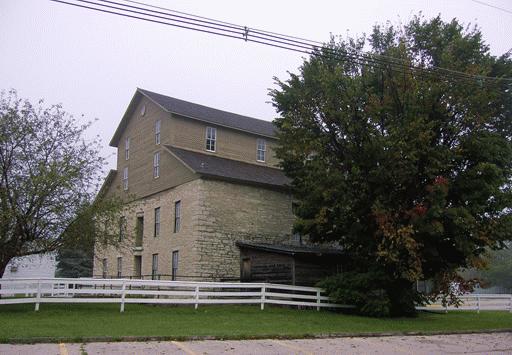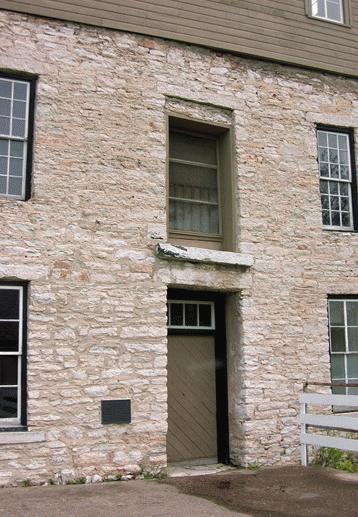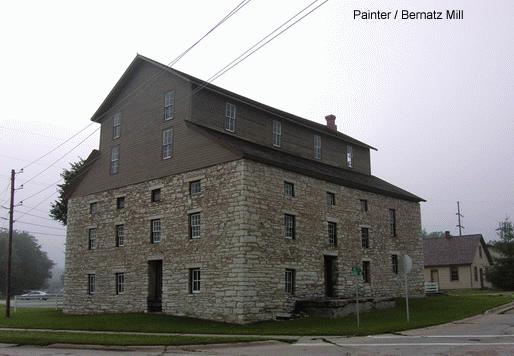
Painter Mill / Bernatz Mill
Winneshiek Co. | Iowa | USA
Watersource: Upper Iowa River.
Painter Mill / Bernatz Mill
Take exit Co. 20/Pole Line Road off US 52 at the NW section of Decorah and procede east about 0.6 miles. Turn right on College Ave./Co. 20 and go south for about 1.5 miles, turning right onto Heivly St. The mill is at Heivly and N. Mill Sts.

The 4.5 story limestone and frame flour mill was built in 1851 by William Painter. Originally, the mill was located on the banks of the Upper Iowa River; but in 1946, the Corp of Engineers altered the course of the river so that now, the mill is several blocks south of the existing flow. *Update: The mill was never on the banks of the Upper Iowa. Though true the river was diverted, there was a mill race that ran the grind stones, not the actually river itself. The second owner, Bernatz, built a dam and mill race just west of the current day College Drive bridge. There are still a few remains of that dam still there. The mill race flowed from the dam, to the mill, and then curved left towards the river again. It was the mill race and the river that made what is called "Goose Island". Jason Rude 04/13/2006*

Believed to be the oldest building in Decorah, the mill was water powered by the Upper Iowa River, then by diesel after the levee system was installed. At one time around the turn of the 20th century, the mill was known as the Heivly Flour and Feed Mill.

Built of fossiliferous Ordavician limestone, the mill had a hip roof in 1885, but acquired the upper story clerestory in 1890. An infestation of wheat blight and other insect blights about 1890 greatly affected the planting of wheat throughout the Midwest, basically haulting wheat production. The mill continued to grind corn and buckwheat, however. A switch was made in the 20th century to production of livestock feeds and custom mixting & grinding of feeds. This continued until the mill closed in 1964.

The mill was restored in 1971, becoming a part of the Vesterheim Norwegian/American Museum. It was placed on the National Register of Historic Places in 1974.
